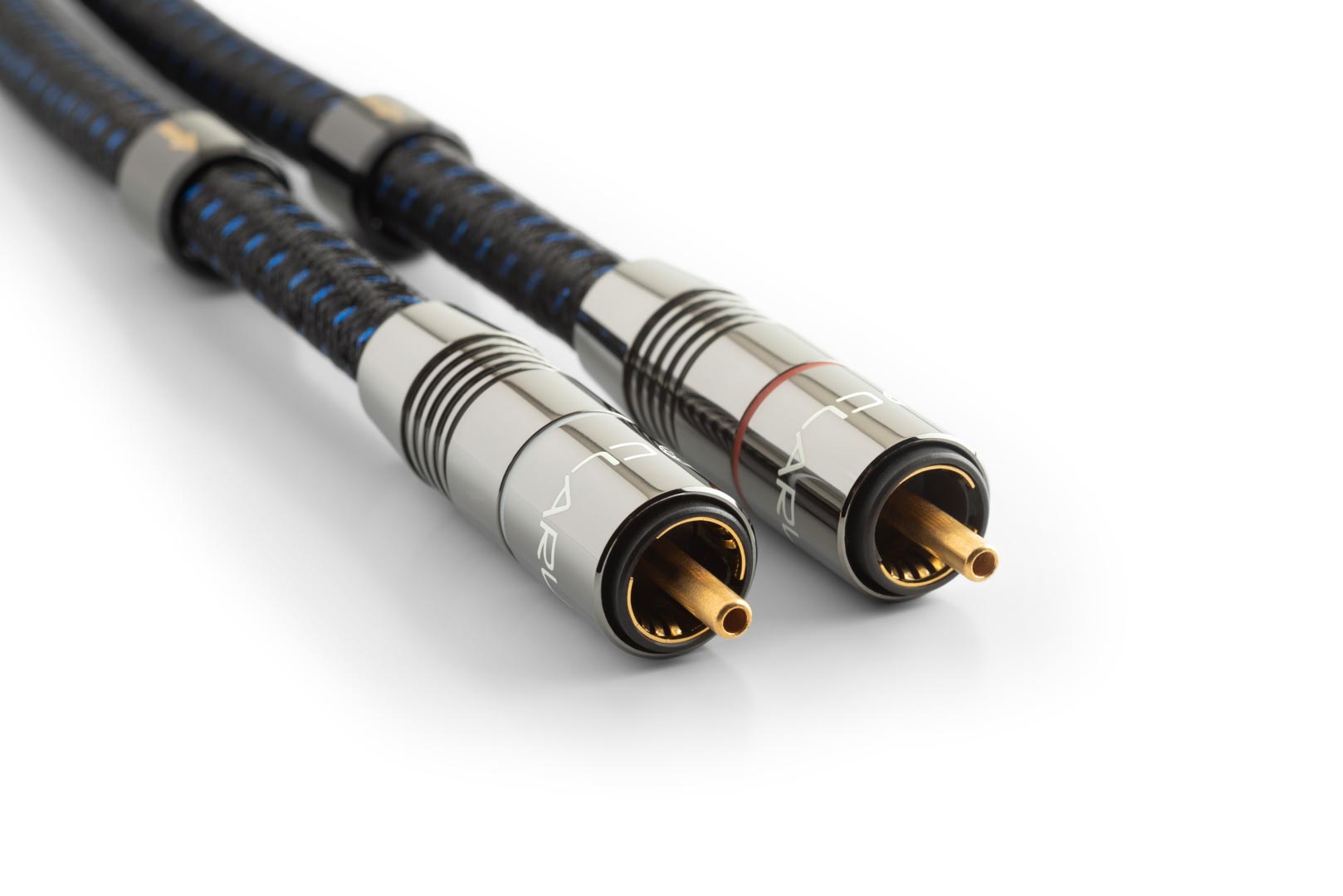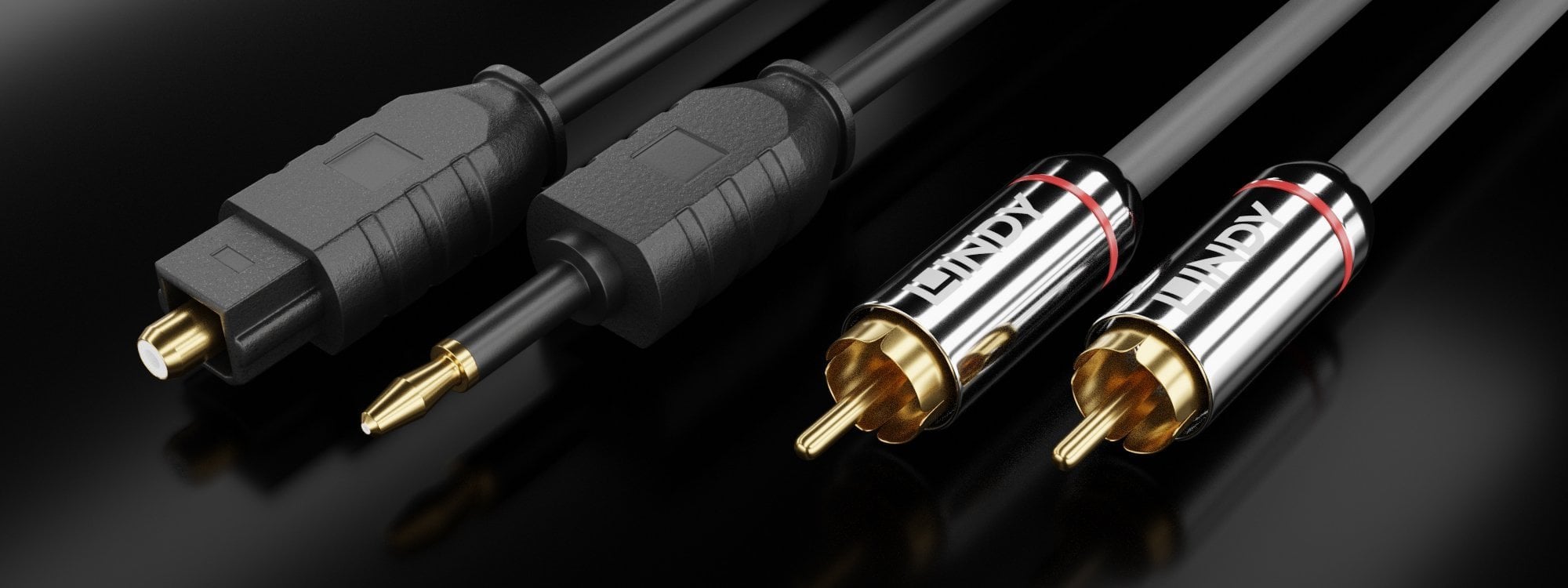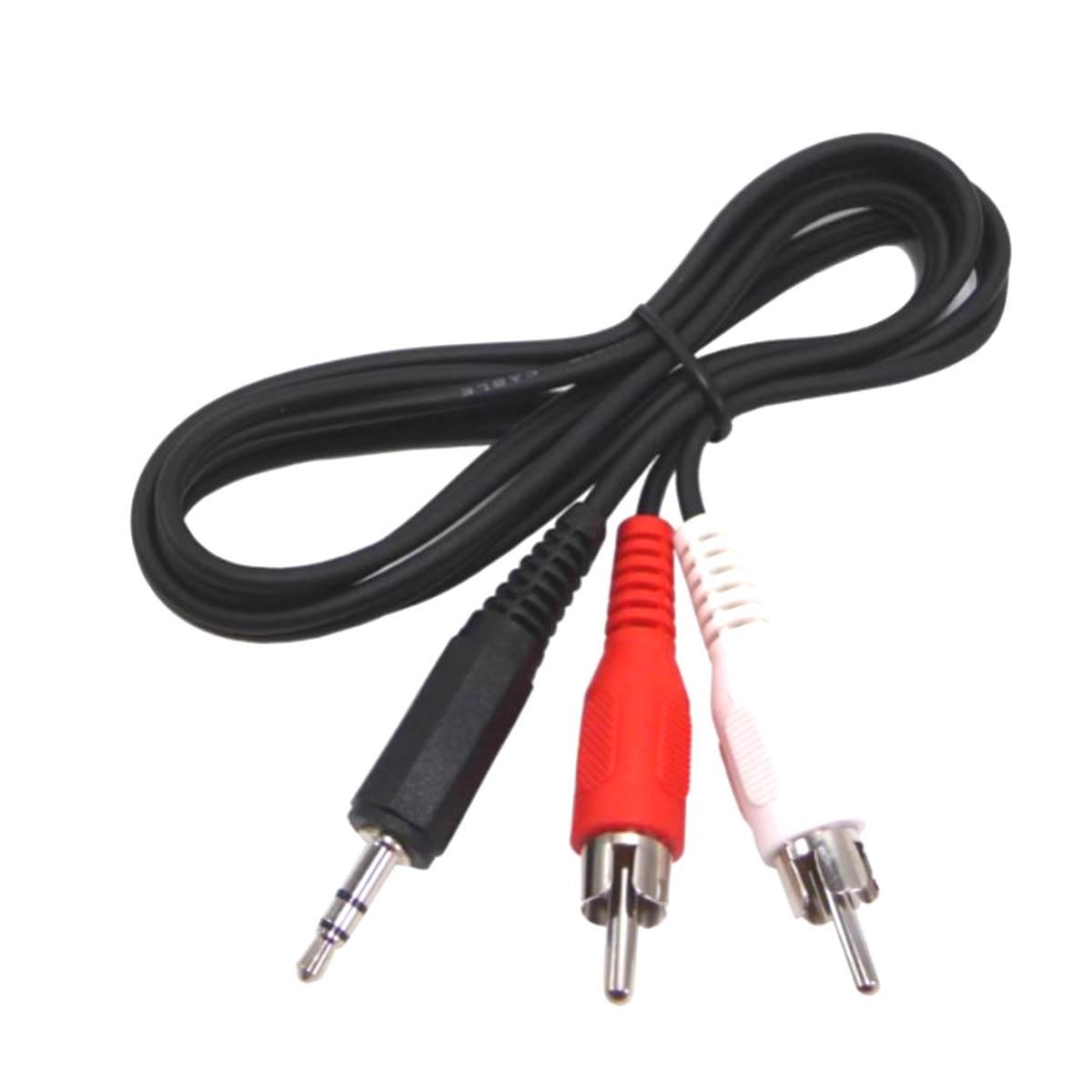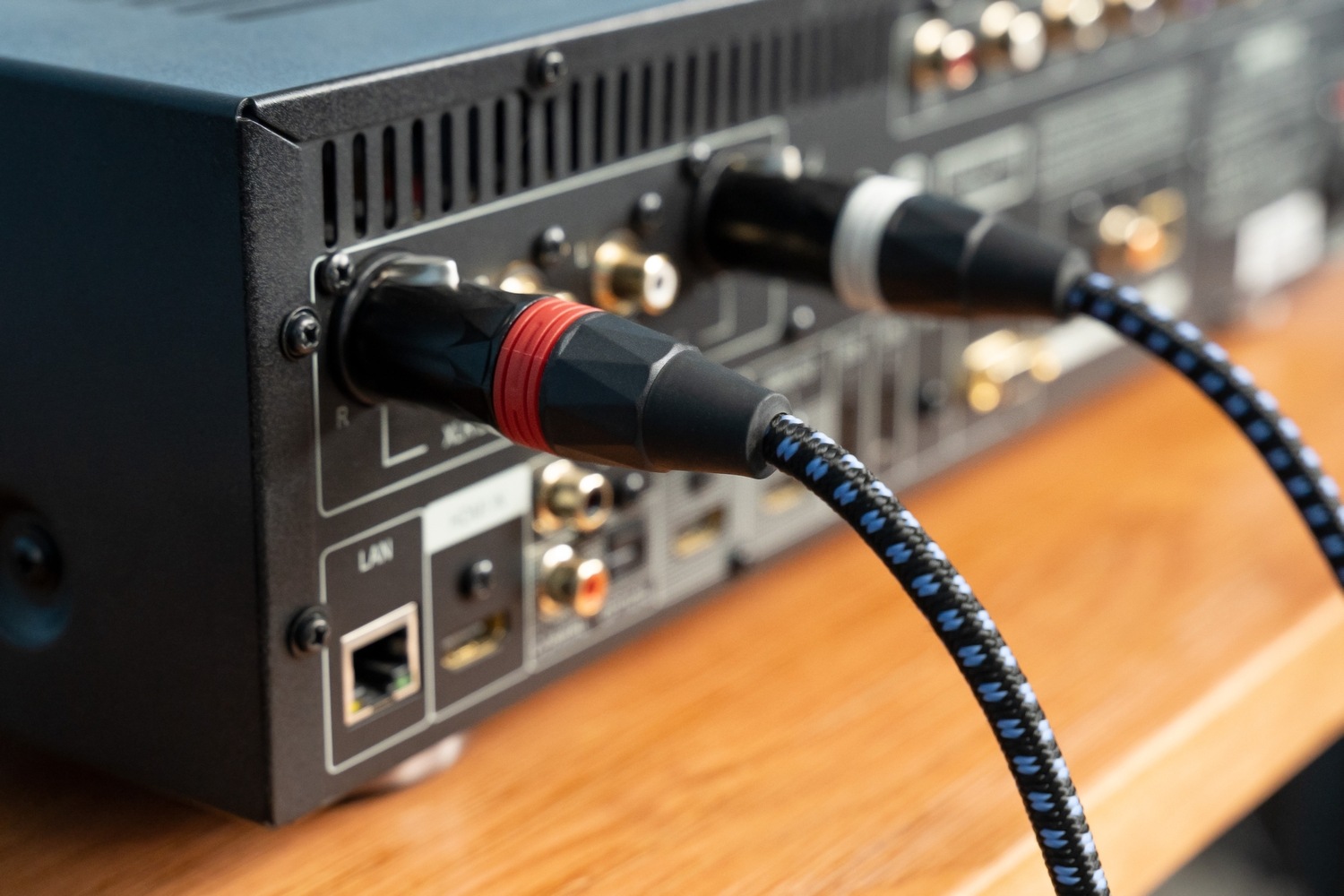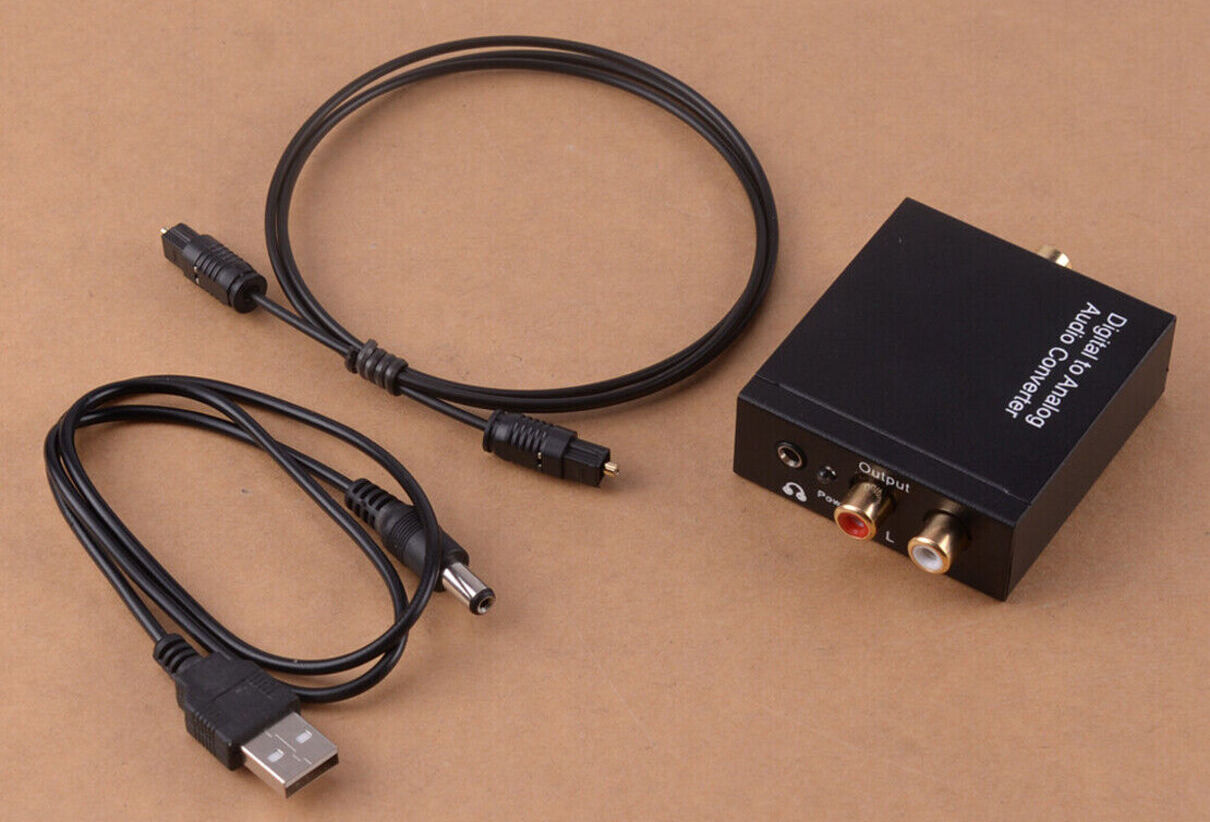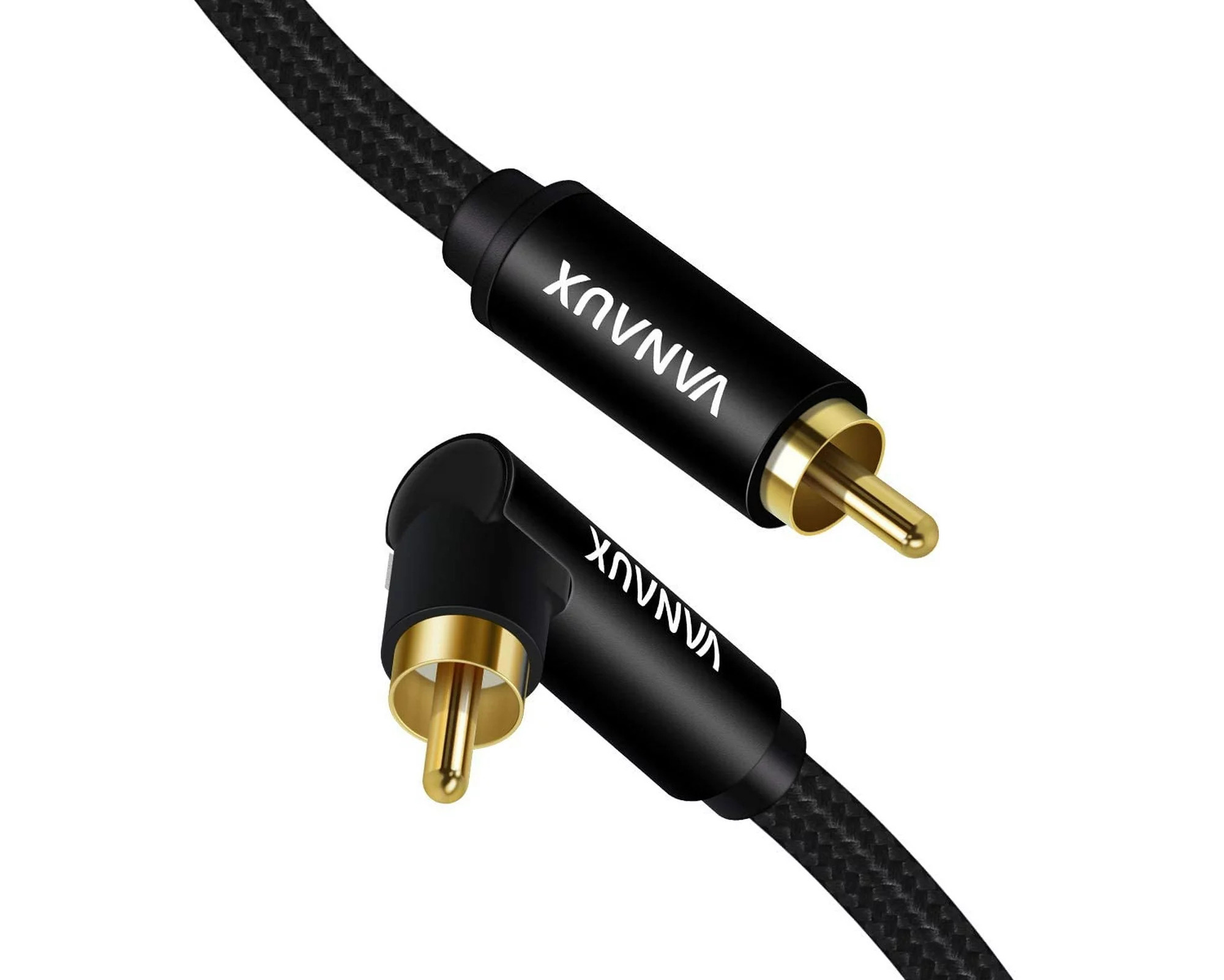Home>Production & Technology>Audio Cable>What Is A Composite Audio Cable


Audio Cable
What Is A Composite Audio Cable
Modified: January 22, 2024
Discover the benefits and uses of composite audio cables. Find out how these versatile audio cables can enhance your audio experience and connect your devices seamlessly.
(Many of the links in this article redirect to a specific reviewed product. Your purchase of these products through affiliate links helps to generate commission for AudioLover.com, at no extra cost. Learn more)
Table of Contents
- Introduction
- Definition of Composite Audio Cable
- Components of a Composite Audio Cable
- Function and Uses of Composite Audio Cable
- Advantages of Composite Audio Cable
- Disadvantages of Composite Audio Cable
- Comparison with Other Types of Audio Cables
- Common Applications of Composite Audio Cable
- How to Choose the Right Composite Audio Cable
- Maintenance and Care Tips for Composite Audio Cable
- Troubleshooting Common Issues with Composite Audio Cable
- Conclusion
Introduction
Welcome to the world of audio cables, where the magic of sound is transported from one device to another. When it comes to audio equipment, having the right cables is crucial to ensuring optimal audio quality. One type of cable that deserves attention is the composite audio cable.
A composite audio cable, also known as an RCA cable or an analog audio cable, is a type of cable commonly used for transmitting analog audio signals. It consists of two or more electrical conductors that are typically color-coded, allowing for easy identification and connection.
The primary purpose of the composite audio cable is to carry audio signals between devices such as TVs, DVD players, gaming consoles, amplifiers, and speakers. With its versatility and widespread use, understanding the pros and cons of composite audio cables can help you make informed decisions when setting up your audio system.
In this guide, we will delve into the world of composite audio cables, exploring their components, functions, advantages, and disadvantages. We will also compare them to other types of audio cables, discuss common applications, provide tips for choosing the right cable, and offer maintenance and troubleshooting advice. So, let’s dive in and unravel the secrets of composite audio cables!
Definition of Composite Audio Cable
A composite audio cable is a type of cable used to transmit analog audio signals. It is commonly referred to as an RCA cable, named after the Radio Corporation of America, which popularized its use in the mid-20th century. The cable consists of multiple conductors housed within a single jacket.
Composite audio cables typically come with two or three connectors, each with a specific purpose. The most common configuration is the two-connector setup, comprising a red connector for the right audio channel and a white or black connector for the left audio channel. In three-connector setups, an additional yellow connector carries composite video signals.
These cables utilize a simple and effective design, with the conductors being insulated and shielded to minimize interference and maintain signal integrity. The connectors used on each end are typically color-coded to ensure easy and correct connections. The male connectors, also known as plugs, have a pin that inserts into the female connectors, or sockets, located on audio devices.
Composite audio cables are widely used in home theater systems, sound systems, and audio setups, as they provide reliable and relatively low-cost connectivity for analog audio signals. While digital audio cables have gained popularity in recent years, composite audio cables still hold their ground due to compatibility with older devices and their simplicity of use.
It’s important to note that composite audio cables are typically used for analog audio signals and are not capable of transmitting digital audio. If you require digital audio transmission, you may need to consider alternative cable types, such as HDMI or optical cables.
Overall, composite audio cables offer a versatile and straightforward solution for transmitting analog audio signals between devices. Let’s explore their components and how they function in the next section.
Components of a Composite Audio Cable
A composite audio cable consists of several key components that work together to transmit analog audio signals. Understanding these components can help you better understand how the cable functions and how to properly handle and connect it.
1. Conductor: The conductor is the core component of the cable responsible for carrying the audio signal. Composite audio cables typically have multiple conductors, usually two or three, depending on whether they transmit audio signals only or both audio and video signals.
2. Insulation: The conductors in a composite audio cable are insulated to prevent signal interference and minimize signal loss. Insulation materials such as PVC or Teflon are commonly used to provide electrical and physical protection for the individual conductors.
3. Shielding: Composite audio cables are often shielded to protect against electromagnetic interference (EMI) and radio frequency interference (RFI). The shielding is typically made of a conductive material, such as copper or aluminum foil, that surrounds the insulated conductors, creating a barrier between the audio signal and external electromagnetic fields.
4. Connectors: Composite audio cables come with male and female connectors on either end to facilitate connection with audio devices. The most common connectors used are RCA connectors, which are color-coded to distinguish between the left (usually white or black) and right (usually red) audio channels. In some cases, there may also be a yellow connector for composite video signals.
5. Cable Jacket: The cable jacket is the outermost layer that encases and protects all the internal components. It is typically made of a durable and flexible material, such as PVC or rubber, that provides insulation and safeguards against physical damage.
When choosing a composite audio cable, it is important to consider the quality of the components used. Higher-quality cables may feature thicker conductors, better insulation, improved shielding, and corrosion-resistant connectors, resulting in better overall sound quality and longevity.
Now that we have explored the components of a composite audio cable, let’s move on to the function and uses of these cables in the next section.
Function and Uses of Composite Audio Cable
The primary function of a composite audio cable is to transmit analog audio signals from one audio device to another. They serve as a reliable method for connecting various audio components and are widely used in a range of applications.
One common use of composite audio cables is in home theater systems. They allow the connection of devices such as DVD players, Blu-ray players, gaming consoles, and set-top boxes to audio receivers or amplifiers. By using composite audio cables, users can enjoy high-quality audio output from their home entertainment systems.
Composite audio cables are also commonly used for connecting audio devices to speakers. Whether it’s connecting a stereo receiver to bookshelf speakers or a headphone amplifier to headphones, composite audio cables facilitate the transmission of audio signals with minimal signal loss.
In addition to home audio setups, composite audio cables are frequently utilized in professional audio applications. Sound systems in venues such as theaters, concert halls, and conference rooms often employ composite audio cables to connect audio mixers, microphones, and amplifiers. By utilizing composite audio cables, professionals can ensure accurate and reliable audio reproduction.
Another important use of composite audio cables is in the broadcasting industry. They are often employed in radio and television studios to connect audio consoles, broadcast equipment, and audio interfaces. The durability and consistent performance of composite audio cables make them well-suited for this demanding industry.
Composite audio cables can also be found in educational institutions, where they play a role in audiovisual setups for classrooms and lecture halls. They allow for the connection of audio devices, such as multimedia players or laptops, to sound systems, enabling clear and intelligible audio for educational purposes.
While composite audio cables excel at transmitting analog audio signals, it’s important to note that they are not suitable for transmitting digital audio signals. If you have digital audio sources or devices, it is recommended to use digital audio cables, such as HDMI, optical, or coaxial cables, which are specifically designed for digital audio transmission.
Overall, the function and uses of composite audio cables encompass a wide range of audio applications, making them a versatile and essential component in audio setups. Next, let’s explore the advantages and disadvantages of using composite audio cables.
Advantages of Composite Audio Cable
Composite audio cables offer several advantages that have contributed to their enduring popularity in the audio industry. Understanding these advantages can help you make an informed decision when choosing audio cables for your setup.
1. Universal Compatibility: One of the primary advantages of composite audio cables is their wide compatibility with various audio devices. They can be connected to a variety of devices, including TVs, DVD players, gaming consoles, amplifiers, and speakers. This compatibility makes composite audio cables suitable for both consumer and professional audio setups.
2. Cost-Effective Solution: Composite audio cables are often considered budget-friendly options compared to other types of audio cables. They are widely available and have been on the market for a long time, resulting in competitive pricing. This affordability makes them accessible to a wide range of users, from casual home theater enthusiasts to professional musicians and sound engineers.
3. Ease of Use: Composite audio cables are easy to use and connect. The color-coded connectors, usually red and white (or black), make it straightforward to identify the left and right audio channels. This simplicity eliminates any guesswork during the setup process and ensures a hassle-free connection experience.
4. Reliable Analog Audio Transmission: While digital audio has gained popularity in recent years, analog audio still plays a significant role in many audio setups. Composite audio cables excel at transmitting analog audio signals, providing reliable and stable signal transfer. This reliability makes them a preferred choice for those who prioritize analog sound quality.
5. Versatility: Composite audio cables are not limited to transmitting audio signals alone. In setups where composite video signals are required, the additional yellow connector in the cable can carry composite video along with the audio. This versatility allows for a streamlined and consolidated connection between audio and video devices.
6. Backward Compatibility: Composite audio cables have been around for decades, making them compatible with older audio devices. If you have legacy audio equipment that only supports analog connections, composite audio cables are an ideal choice for seamless integration without the need for converters or adapters.
While composite audio cables have their advantages, it’s important to consider the specific needs of your audio setup and the limitations of these cables. In the next section, we will explore the disadvantages of using composite audio cables to provide a comprehensive view of their suitability.
Disadvantages of Composite Audio Cable
While composite audio cables have their advantages, they also come with some limitations and disadvantages that are important to consider when choosing audio cables for your setup. Understanding these drawbacks will help you make an informed decision based on your specific needs.
1. Limited Audio Quality: Composite audio cables transmit analog audio signals, which are susceptible to interference and signal degradation. Compared to digital audio cables, composite audio cables may not provide the same level of audio fidelity and dynamic range. If you prioritize high-quality audio reproduction, digital audio cables, such as HDMI or optical cables, may be a better choice.
2. Signal Loss and Interference: Composite audio cables are more susceptible to signal loss and interference compared to shielded digital audio cables. Factors such as cable length, the presence of other electronic devices, and electromagnetic interference can impact the audio signal quality. To minimize signal degradation, it is important to choose high-quality cables with proper shielding and insulation.
3. Limited Distance: Composite audio cables have a limited effective transmission distance, typically around 50 to 100 feet. Beyond this distance, the audio signal may experience more significant degradation, resulting in reduced audio quality or loss of signal altogether. If you have a large audio setup or need to span long distances, other cable options, such as digital audio cables or audio over Ethernet, may be more suitable.
4. Incompatibility with Digital Audio: Composite audio cables are designed specifically for analog audio signals and are not suitable for transmitting digital audio. If you have digital audio sources or devices, such as Blu-ray players or soundbars, composite audio cables will not be able to transmit the audio signals effectively. Instead, you should opt for digital audio cables, such as HDMI or optical cables, which are designed for digital transmission.
5. Lack of Channel Separation: Composite audio cables do not offer separate channels for audio signals. The left and right audio channels are combined into a single cable, which means that there is no true individual channel separation. This can impact stereo sound reproduction, particularly in setups that demand precise spatial audio positioning and imaging.
While the disadvantages of composite audio cables should be taken into consideration, it is important to assess how these limitations align with your specific audio needs and budget. Ultimately, finding the right balance between cost, convenience, and audio quality will help you make the best choice for your audio setup.
Next, we will compare composite audio cables with other types of audio cables to provide a broader perspective on their strengths and weaknesses.
Comparison with Other Types of Audio Cables
When it comes to audio cables, there are various types available, each with its own strengths and weaknesses. Let’s compare composite audio cables with some other commonly used audio cables to get a better understanding of their differences.
1. Composite Audio Cable vs. Digital Audio Cable: Composite audio cables transmit analog audio signals, while digital audio cables, such as HDMI or optical cables, transmit digital audio signals. Digital audio cables offer higher fidelity and can handle uncompressed audio formats, resulting in better overall audio quality. They are also capable of transmitting multi-channel audio and support higher sample rates and bit depths. However, digital audio cables may be more expensive and require compatible devices to fully utilize their capabilities.
2. Composite Audio Cable vs. Balanced Audio Cable: Balanced audio cables, such as XLR or TRS cables, are commonly used in professional audio setups. Unlike composite audio cables, which use unbalanced connections, balanced audio cables utilize three conductors—a positive signal, a negative signal, and a ground. This balanced configuration reduces noise and interference, resulting in cleaner audio transmission. Balanced audio cables are especially beneficial for long cable runs and environments with high electromagnetic interference. However, they may be bulkier and more costly compared to composite audio cables.
3. Composite Audio Cable vs. Speaker Cable: Speaker cables are specifically designed to connect amplifiers or receivers to speakers. They typically feature thicker gauge wires to handle higher power levels. Unlike composite audio cables, which focus on audio signal transmission, speaker cables are designed for low resistance and minimal signal loss to deliver optimal power to the speakers. If you are connecting speakers to an audio receiver or amplifier, using dedicated speaker cables is recommended for the best performance.
4. Composite Audio Cable vs. Coaxial Cable: Coaxial cables are often used for audio and video signal transmission. They consist of a center conductor surrounded by an insulating layer, a conductive shield, and an outer insulating jacket. Coaxial cables are capable of carrying both analog and digital audio signals, making them versatile. However, compared to composite audio cables, coaxial cables may be more susceptible to interference and signal loss, especially over longer distances.
When choosing between different types of audio cables, it’s important to consider the specific requirements and capabilities of your audio devices, the distance of transmission, and the desired audio quality. Taking all these factors into account will help you make an informed decision that best suits your audio setup.
Next, let’s explore the common applications of composite audio cables and their relevance in various audio setups.
Common Applications of Composite Audio Cable
Composite audio cables have a wide range of applications across different audio setups. Let’s explore some of the common applications where composite audio cables are frequently used.
1. Home Theater Systems: Composite audio cables are commonly used in home theater systems to connect devices such as DVD players, Blu-ray players, gaming consoles, and cable/satellite boxes to audio receivers or amplifiers. They allow for the transmission of audio signals, providing immersive sound for an enhanced home theater experience.
2. Sound Systems and Audio Setups: Composite audio cables are widely used in sound systems and audio setups, both in professional and consumer settings. They facilitate the connection between audio mixers, amplifiers, microphones, and speakers, allowing for clear and reliable audio transmission. This makes composite audio cables popular in venues such as theaters, concert halls, studios, and conference rooms.
3. Education and Lecture Halls: In educational environments, composite audio cables are used to connect audio devices, such as multimedia players or laptops, to sound systems in classrooms and lecture halls. This enables clear audio playback for educational presentations, enhancing the learning experience for students.
4. Studio Recording and Broadcast: Composite audio cables play a crucial role in studio recording and broadcast setups. They are used to connect audio consoles, recording equipment, and audio interfaces, ensuring high-quality audio transmission throughout the recording or broadcasting process.
5. Personal Audio Systems: Composite audio cables are also relevant for individual audio setups, such as connecting a stereo receiver or headphone amplifier to speakers or headphones. They provide a reliable and cost-effective method for enjoying music or audio content from personal audio devices.
These are just a few examples of the common applications where composite audio cables are used. Their versatility and compatibility with a wide range of audio devices make them a convenient choice for various audio setups.
Now that we have explored the applications of composite audio cables, let’s delve into some important factors to consider when choosing the right cable for your specific needs.
How to Choose the Right Composite Audio Cable
When selecting a composite audio cable for your audio setup, there are several factors to consider to ensure optimal performance and compatibility. Here are some key considerations to guide you in choosing the right cable:
1. Cable Quality: Opt for a high-quality composite audio cable that features thick, durable conductors, reliable shielding, and sturdy connectors. Look for cables made from reputable manufacturers known for their commitment to audio quality.
2. Cable Length: Determine the required cable length based on the distance between your audio devices. It’s advisable to choose a cable that is slightly longer than necessary to allow for flexibility in setup and cable management.
3. Connector Quality: Ensure that the connectors on the cable are well-made and offer a secure fit. Corrosion-resistant connectors are preferably gold-plated to ensure optimal signal transfer and minimize signal degradation over time.
4. Compatibility: Check the compatibility of the cable with your audio devices. Ensure that the cable’s connectors match the audio outputs and inputs on your devices. It’s also essential to confirm compatibility with your device’s audio formats, such as stereo or surround sound.
5. Budget: Consider your budget when selecting a composite audio cable. While higher-priced cables may offer better build quality and transmission capabilities, budget-friendly options can still provide satisfactory audio performance for casual users.
6. Cable Management: Think about how you will manage the cables in your setup. Choose a cable length and design that allows for neat and organized cable routing to minimize tangles and potential signal interference.
7. Future Considerations: If you anticipate future upgrades or changes to your audio setup, consider choosing a composite audio cable with room for growth. For instance, opting for a longer cable or one with additional connectors for video signals can provide flexibility for future needs.
By considering these factors, you can select a composite audio cable that meets your specific requirements in terms of quality, compatibility, and budget. Remember that the cable’s quality plays a crucial role in delivering clear and accurate audio signals.
Next, let’s explore some maintenance and care tips to ensure the longevity and optimal performance of your composite audio cable.
Maintenance and Care Tips for Composite Audio Cable
To ensure optimal performance and longevity of your composite audio cable, proper maintenance and care are essential. Here are some tips to help you keep your cable in good condition:
1. Avoid Excessive Bending: Excessive bending, twisting, or kinking of the cable can damage the internal conductors and lead to signal loss. When routing or storing the cable, do so in a way that minimizes sharp bends or twists.
2. Handle with Care: Treat your composite audio cable with care during installation and use. Avoid pulling or tugging on the cable when connecting or disconnecting devices, as this can weaken the connectors and strain the cable itself.
3. Secure Connections: Ensure that the connectors are inserted securely into the audio devices. Loose connections can lead to intermittent audio or poor signal transmission. Periodically check the connections and reseat them if necessary.
4. Keep away from Heat Sources: Avoid placing the composite audio cable near heat sources such as radiators, heaters, or direct sunlight. Excessive heat can damage the cable insulation and affect its performance.
5. Minimize Signal Interference: Keep the composite audio cable away from other electronic devices, power cables, or power sources that may cause electromagnetic interference. This interference can result in audio distortion or signal degradation. If necessary, use cable management solutions, such as cable ties or cable conduits, to separate the audio cable from other cables.
6. Regular Inspections: Periodically inspect the cable for any signs of damage, such as frayed insulation or loose connectors. If you notice any issues, it is recommended to replace the cable to avoid potential signal loss or electrical hazards.
7. Proper Storage: When not in use, store the composite audio cable in a cool, dry location that is free from excessive dust or moisture. Coiling the cable loosely and avoiding tight bends can help prevent damage during storage.
8. Clean Connections: Over time, connectors can accumulate dirt, dust, or oxidation, affecting the signal quality. Use a soft cloth or a specialized contact cleaner to gently clean the connectors. Be sure to follow the manufacturer’s guidelines for cleaning and avoid using abrasive materials that could damage the connectors.
Following these maintenance and care tips can help extend the lifespan and ensure optimal performance of your composite audio cable. Take the time to properly handle and store the cable to avoid any issues that may impact its functionality.
Now, let’s move on to the next section and explore some common troubleshooting techniques for resolving issues with composite audio cables.
Troubleshooting Common Issues with Composite Audio Cable
While composite audio cables are generally reliable, occasional issues may arise that can affect the audio signal transmission. Here are some common problems you may encounter with composite audio cables and steps to troubleshoot them:
1. No Audio or Low Volume: If you are not getting any sound or the volume is very low, first check that the cable is securely connected to both the audio source and the destination device. Ensure that the connectors are inserted fully and tightly. You should also verify that the audio output settings on the source device are correctly configured.
2. Distorted or Poor Audio Quality: If the audio sounds distorted, check for loose connections or damaged cables. Ensure that the connectors are clean and free from dirt or oxidation. If the issue persists, try using a different composite audio cable to determine if the problem lies with the cable itself.
3. Intermittent Audio: If the audio intermittently cuts in and out, check for loose connections. Wiggle the connectors gently to see if there is any change in audio output. If there are multiple connectors (such as for video), disconnect and reconnect them one by one to identify the faulty connection.
4. Unbalanced Audio: If the audio seems unbalanced, where one channel is louder or clearer than the other, ensure that the connectors are correctly inserted into their corresponding channels. Swap the left and right channel connectors to see if the audio balance improves. If it does, the issue may lie with the audio source or the destination device’s audio settings.
5. Buzzing or Humming Noise: A buzzing or humming noise in the audio signal can be caused by electrical interference. Ensure that the composite audio cable is routed away from power cables, power sources, or other electronic devices. If possible, use shielded audio cables or consider upgrading to balanced audio cables that are more resistant to electromagnetic interference.
6. No Video Signal (Yellow Connector): If you are using a composite audio cable with a yellow connector for video signals and are not getting any video output, first check that the video source device is configured to output composite video. Verify that the video input on the destination device is set correctly. You can also try using a different video cable or test the video connection separately to rule out a faulty cable.
If you have gone through these troubleshooting steps and are still experiencing issues with your composite audio cable, it may be worth consulting a professional or reaching out to the cable manufacturer for further assistance.
Remember, proper maintenance and care of your composite audio cable can also help prevent common issues from occurring. Regularly inspect the cable for any signs of damage and ensure that it is stored and handled correctly.
Now that you have an understanding of troubleshooting techniques, let’s conclude our exploration of composite audio cables in the next section.
Conclusion
Composite audio cables, also known as RCA cables or analog audio cables, are versatile and widely used for transmitting analog audio signals in various audio setups. While digital audio cables have gained popularity, composite audio cables still hold their ground due to their universal compatibility, affordability, and ease of use.
In this comprehensive guide, we have explored the components, function, and uses of composite audio cables. We have discussed their advantages of universal compatibility, cost-effectiveness, ease of use, reliability, and versatility. However, we have also highlighted several disadvantages, including limited audio quality, susceptibility to interference, and incompatibility with digital audio signals.
We have compared composite audio cables with other types of cables, such as digital audio cables, balanced audio cables, speaker cables, and coaxial cables, to provide a broader understanding of their strengths and weaknesses. Additionally, we have discussed the common applications of composite audio cables, ranging from home theater systems and sound setups to educational institutions and professional audio environments.
To ensure the best performance, we have provided tips on how to choose the right composite audio cable, including considering cable quality, length, compatibility, budget, and future needs. We have also emphasized the importance of proper maintenance and care, such as avoiding excessive bending, handling with care, and keeping the cables away from heat sources and potential interference.
Furthermore, we have provided troubleshooting techniques for common issues with composite audio cables, such as no audio or low volume, distorted audio quality, intermittent audio, unbalanced audio, buzzing or humming noise, and video signal issues.
In conclusion, composite audio cables offer an accessible and reliable solution for transmitting analog audio signals. Understanding their advantages, disadvantages, and best practices for use and maintenance can help you make informed decisions when setting up your audio system. Whether you are building a home theater, studio, or sound system, composite audio cables can play a crucial role in delivering quality audio experiences.
Remember to choose high-quality cables, properly handle and store them, and troubleshoot any issues that may arise. With the right composite audio cable and proper care, you can enjoy seamless audio connectivity and immersive sound in your audio setup.


